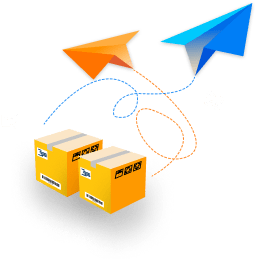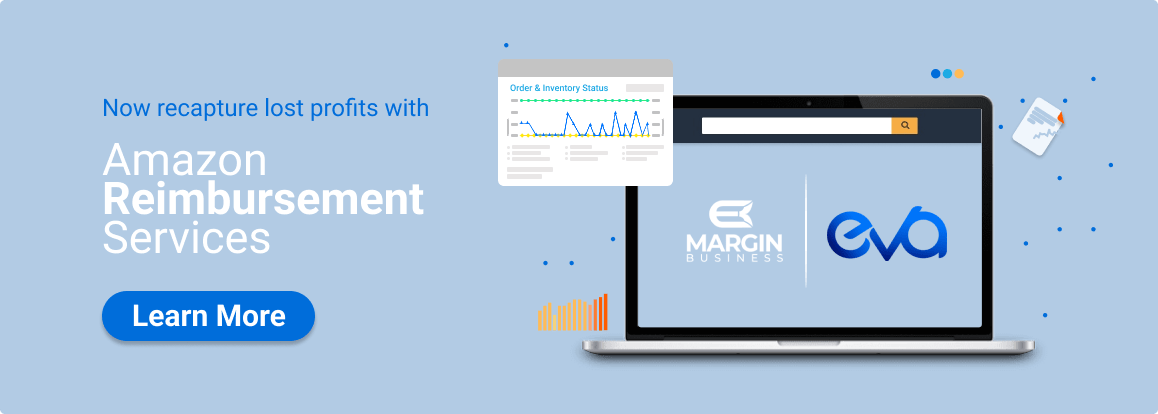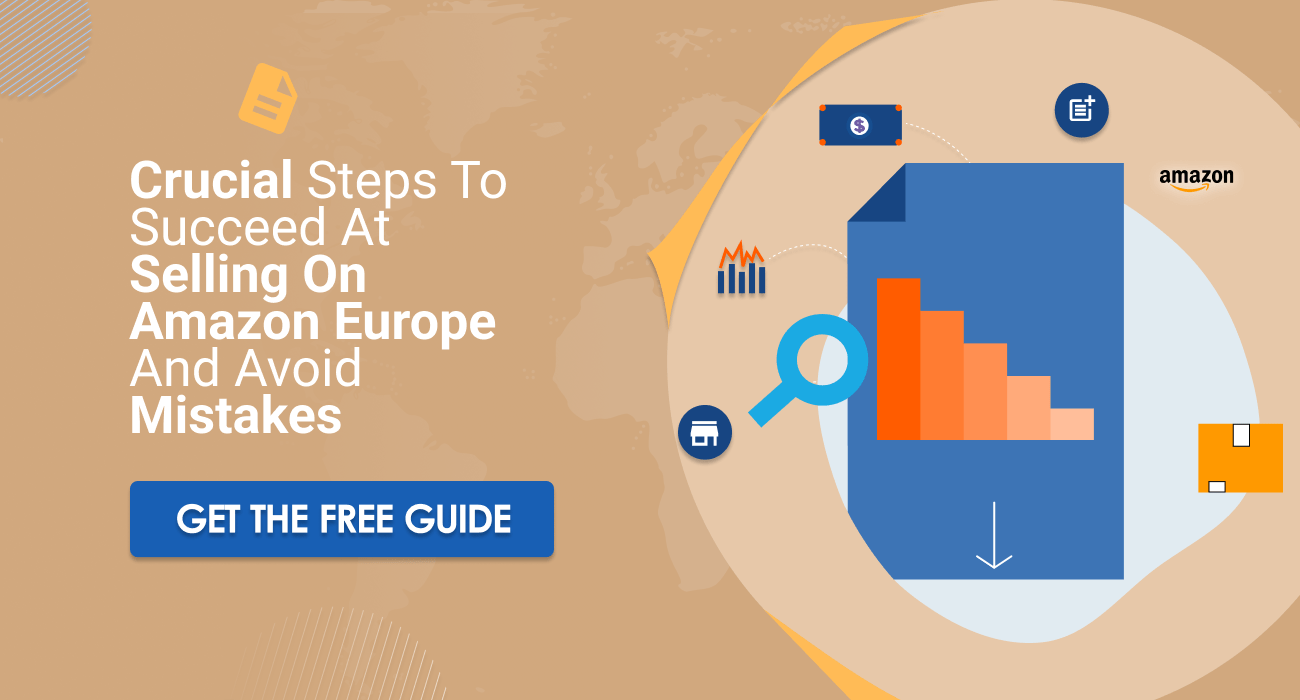Analytics for Amazon Sellers: 3 Key Metrics You Can’t Afford to Ignore
…and how they work together to help you grow your business

Growth Manager at Nozzle

As an Amazon seller, you’re likely always looking for ways to increase your sales and lower your costs. While there are a number of metrics you may be keeping track of, there are three that you simply can’t afford to ignore.
In this blog post, we’ll discuss what these metrics are, and how you can use them to grow your Amazon business.
So,
whether you’re a new Amazon seller or have been selling on the platform for years, read on to learn more!
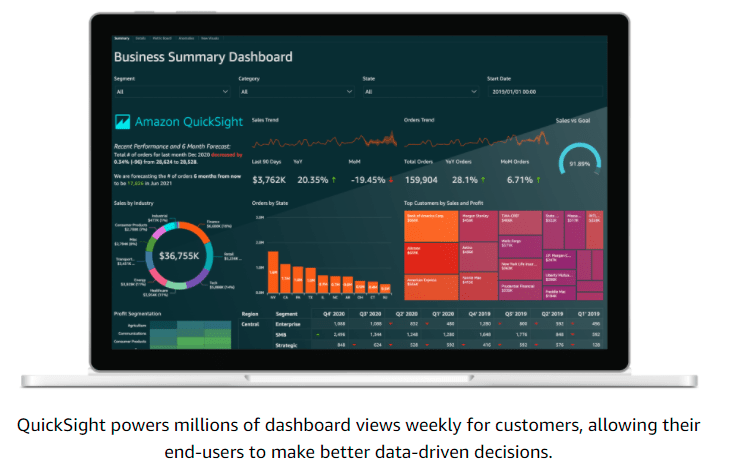
Customer Lifetime Value - Profit Per Customer
Customer lifetime value (CLV) ultimately comes down to “sales trajectories.” In other words, the ability to predict what customers will buy next and increase repeat purchases from customers.
CLV is the secret ingredient that allows Amazon sellers to manage customer acquisition costs and build relationships with customers over a longer period of time.
Understanding the average customer lifecycle value associated with different products allows Amazon sellers to think about long-term customer acquisition cost (CAC) trajectories.
For Example,
If a brand knows that the average purchase rate per customer for a particular product has been four times in its lifetime, advertising campaigns can be implemented with that in mind. It becomes practical to pay more for contextual advertising (outperform competitors) in order to attract a customer or even incur losses on the first purchase, knowing that there will be a second/third/fourth purchase.
Ultimately, maximizing CLV is critical to long-term success for Amazon sellers.

In the midst of market competition on Amazon, it’s often easier and cheaper to retain a customer than it is to acquire a new one, resulting in higher profit margins. It’s also better to shorten repeat purchase cycles and increase ad effectiveness.
There are many additional benefits associated with using CLV as an Amazon seller. You can potentially afford to invest more in your branded advertising, knowing that you’ll likely recoup that cost with the increase in loyal customers.
Likewise,
You can compete for the top spot in ads and increase your organic rank to increase your organic sales.
Furthermore, Amazon sellers are more able to predict cash flows to fund inventory purchases, new product launches, and large holiday advertising spend, make vital decisions in sales, marketing, and customer service.
As an Amazon seller factoring customer lifetime value into your strategy allows you to ask and, crucially.
Answer these critical questions:
- How much do you have to spend to acquire a client?
- How can you offer customized products and services to your best customers?
- How much do you have to spend to serve and keep a customer?
- What types of customers do you have to spend the most to try to attract?
- What is the ideal customer experience for my Amazon customers?
While we’ve already shown how CLV can play a role in many Amazon Marketplace businesses, it plays a special role in your business growth strategy. There are many strategies you can follow as an Amazon seller. Here we will cover some common approaches, what they get and how to implement them.
To increase profits, you need to increase customer loyalty and expand your customer base. By spending the right amount, you will be able to attract the customers who are most valuable to you. You can then review your portfolio to target those with the highest spend.
You can also understand how reliant you are on your existing customers and tailor new marketing strategies and campaigns accordingly.
As we’ve mentioned, on average, retaining customers is cheaper than acquiring them.
By retaining customers and increasing your CLV, you can spend more on customer acquisition (CAC) and still be profitable in the long run.
When you know your customers and what products they are looking for, you can focus your inventory and products on those factors, rather than chasing everyone and everything and expecting results. Customer lifetime value really boils down to “Purchasing Patterns”.
You can predict what customers will buy next and the likelihood of repeat purchases.
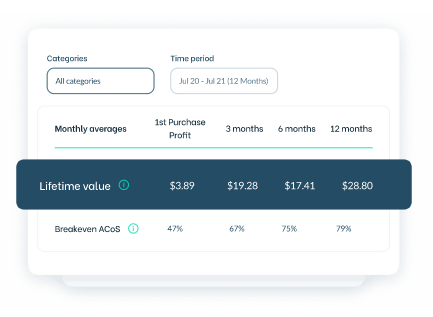
When it comes to selling on Amazon, once you gain significant momentum, the sales trajectory of your business can feel like a flywheel. You can use CLV to make the flywheel spin faster.
Sales Velocity has real impact in the Amazon marketplace, and once it’s in place, you’ll want to do your best to keep it up. CLV tends to lead to customer-facing marketing and lends itself to a “full funnel” approach.
By understanding product-specific CLVs, you gain insight into which products are most valuable in the long run and, most importantly, why. This leads to repeat purchases of a single product or increased organic sales over time.
True Breakeven ACoS
You can make your Amazon seller business even more profitable by calculating your true break-even Advertising Cost of Sales (ACoS).
Very Simply,
Your break-even ACoS is the amount you can afford to spend on advertising and still expect to make a profit, but your true breakeven ACoS enables you to view your ad spend through the lens of individual customer value and become more aggressive with your campaigns.
Return on Ad Spend (RoAS), like ACoS, only provides insight into advertising revenue and spend, but revenue is not a measure of profit.
Sure,
You can put healthy RoAS back into your ad campaigns and generate a lot of revenue, but if you don’t know your profit margins and break-even point, how do you know it’s profitable? You can’t really understand your Amazon RoAS until you know your rate of return and break-even point.
If your profit margins are high, you may be able to spend more on advertising to increase revenue or reduce product costs to attract more customers.
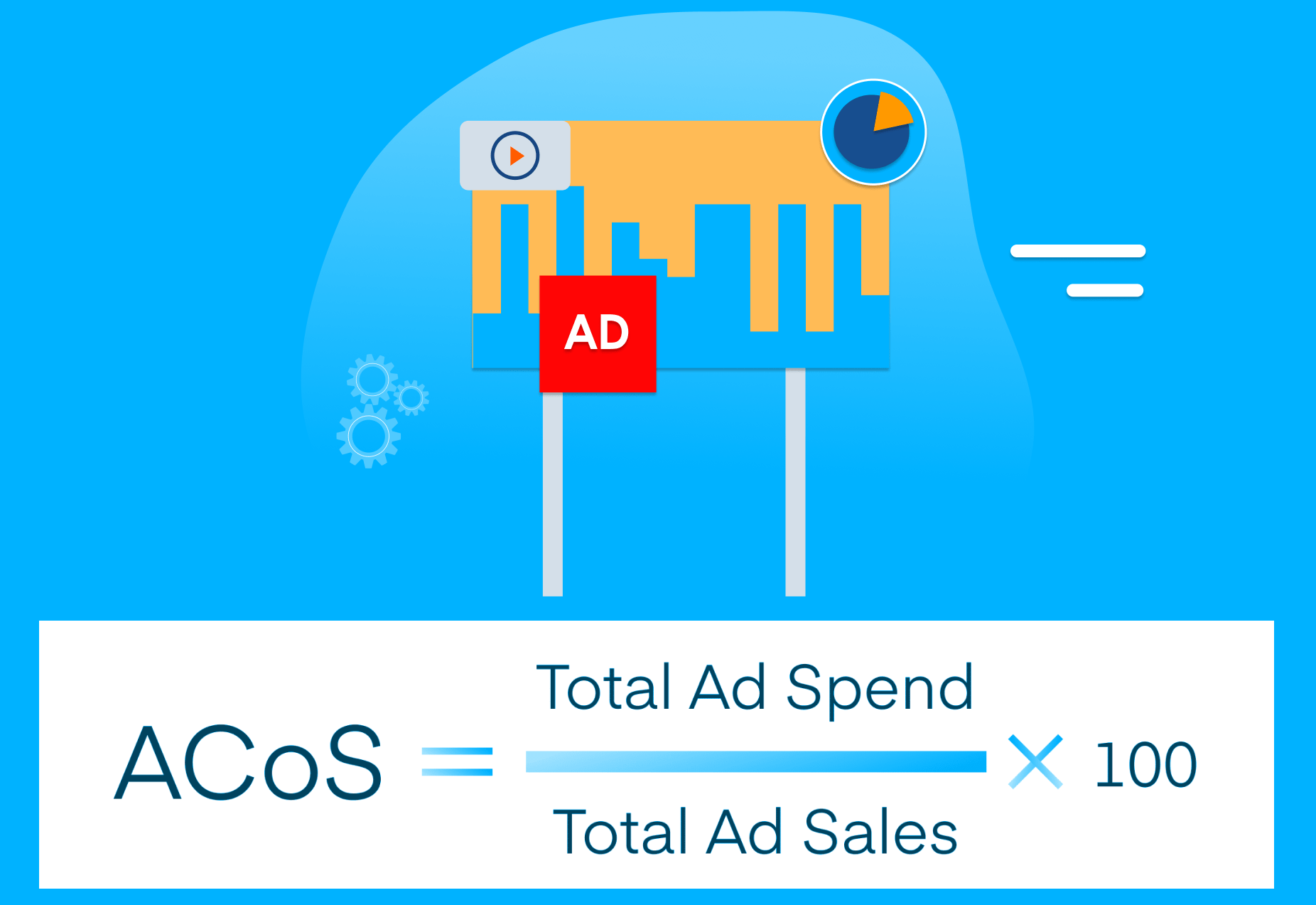
Whereas if you have low profit margins, you will likely have less wiggle room to turn a profit after spending on ads, but you can also benefit from higher revenue and higher organic rankings.
Amazon’s ACoS – available in your Search Term report – is based on the assumption that you’re selling a single product. That means it only takes into account your first sale and not what happens afterward, so break-even ACoS will depend heavily upon how much profit was made from one single purchase.
So (and I’m sure you can see where we’re going with this!)
Adjusting your break-even ACoS to take into account your Customer Lifetime Value means that you can bid higher and win more sales, safe in the knowledge that one sale will lead into another by the same customer. It’s a long-term strategy for profitability no matter what happens with your first sale.
Customer Acquisition Cost
Customer Acquisition Cost (CAC) is the total amount required to acquire the average customer, including Amazon or agency fees.
It’s generally assumed that a lower CAC means the business is spending money more efficiently and should get a higher return on its overall profits, however, this may not always be the best strategy for all of your products.
Why?
It’s all about the combined power of your CLV/profit-per-customer and your acquisition cost. Sometimes it’s worth spending more to acquire a customer, particularly if you know that that single customer is likely to return multiple times and buy again.
Knowledge of CLV combined with customer acquisition costs is critical if you want to be successful as an Amazon seller.
A balance of CLV and CAC will ensure that your activities are profitable and optimized for your business.
The CLV to CAC Ratio is an important metric for tracking the relationship between the customer acquisition cost and lifetime value (CLV). By providing a clearer understanding of what existing customers value and how you can better leverage that attention, these metrics allow you to personalize targeting to your ideal audience for a sustainable business.
Let's build your Amazon seller strategy with data!

It’s important to track all three of these metrics together and understand the relationship between them.
Doing so gives you the ultimate measure you need to scale your Amazon business. While Amazon Seller Central does allow you to export some data, you may find that the process can be laborious, and pretty manual!
Check out this list of Analytics tools for Amazon sellers for more information on the analytics software for Amazon sellers that can help you achieve your goals, and take your brand to the next level.
FAQs
Formerly known as Amazon Retail Analytics. Amazon Brand Analytics is a selection of reports available to approved members of the Amazon Brand Registry. It shows sellers key insights into customer behavior, popular search queries, competitive success, and advertising campaigns.
Amazon uses AKDF (Amazon Kinesis Data Firehose) – It captures, updates and retrieves streamed data in Amazon S3, Amazon Redshift, Amazon OpenSearch Service and Splunk, allowing near real-time analysis with the business intelligence tools and dashboards you currently use.
Amazon EMR is a managed cluster platform that simplifies the operation of large data frames, such as Apache Hadoop and Apache Spark, on AWS to process and analyze large amounts of data.
SFR – Search Frequency Rank is reminiscent of the Amazon bestseller (BSR) because it calculates the popularity of a keyword relative to the keywords around it.
About the Author
Subscribe & Scale!
Free Join 10827 Successful Amazon Sellers Who Already Have a Head Start
⚡️ Supercharge Amazon business by implementing all the latest best practices, tips, and tricks 📦
